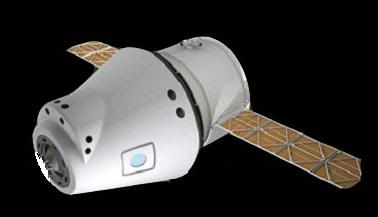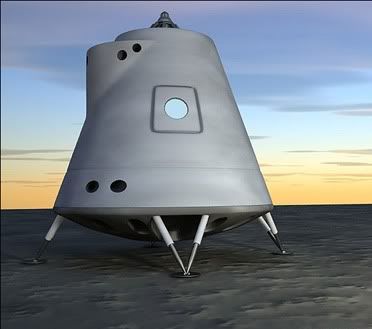Post by glactus on Jun 20, 2011 1:29:37 GMT
With the cancellation of the United States Constellation program, will Russia grab this opportunity to take one step further and allocate funding for an advanced Lunar/Mars Program? The country is basking in oil revenue with the increase in prices for that product after the September 11 attack, and unlike the USA, they have a President in Putin who is very space orientated.

The proposed Russian space station
In April 2008, the head of the Russian Space Agency reiterated the previously voiced Russian goal to replace the ISS with an all-Russian station in low Earth orbit. This time, he described its purpose as an assembly platform for deep-space transport ships heading to the Moon and Mars. He claimed that the Security Council had approved the plan in general, however without setting a timeframe. In January 2009, Aleksei Krasnov, the head of manned space flight directorate at the Russian space agency echoed his boss, saying that the future Russian space station in the low-Earth orbit would serve as a foundation for lunar program and, later, for expeditions to Mars.

The crew capsule
At the Russian space agency there was a great deal of uncertainty surrounding the next-generation transport ship meant to replace the Soyuz. Just at the beginning of April 2008, the head of Roskosmos manned directorate Aleksei Krasnov assured the media that Russia and Europe were finishing negotiations on the combined development of the new-generation vehicle although a political inter-government agreement was needed to seal the deal. Both sides declared the expedition to the Moon to parallel a similar US effort as the goal of the project
 .
.
Russian Moon lander
Yet, just a few days later, Vitaly Lopota, the head of RKK Energia, chief developer of manned spacecraft, told reporters that his organization could not formulate any concept of the new spacecraft without knowing "where would we fly." Speaking at a press-conference after the docking of the Soyuz TMA-12 with the ISS, Lopota, said that once the expected political decision on the destination of the program was made, RKK Energia would quickly unveil one of several concepts of the future vehicle. He promised a radically new spacecraft, capable of landing under a wide range of conditions.
Unofficial postings on a highly respectable Russian web forum, apparently originating from RKK Energia, claimed that the reentry capsule of the proposed new spacecraft would have a mass of nine tons and it would be capable of zeroing in onto a landing area with a radius of just two kilometers. A fully assembled vehicle configured to reach the ISS would have a mass of 13 tons. Another version of the ship, with a service module designed for autonomous missions, would reach 18 tons.
One speculative estimate arrived at the dry mass (without propellant) of the Moon-bound vehicle equal to 12 tons. After separation from the upper stage, which would send the vehicle from Earth orbit toward the Moon, the full mass of the spacecraft was estimated at 22.4 tons.

Looking at the crew capsule
Credits: These are Russian Space Agency images
Text by Russian space web/Glactus
Telescope in avatar: Meade 16" LX 200
Astronomer in avatar: Glactus

The proposed Russian space station
In April 2008, the head of the Russian Space Agency reiterated the previously voiced Russian goal to replace the ISS with an all-Russian station in low Earth orbit. This time, he described its purpose as an assembly platform for deep-space transport ships heading to the Moon and Mars. He claimed that the Security Council had approved the plan in general, however without setting a timeframe. In January 2009, Aleksei Krasnov, the head of manned space flight directorate at the Russian space agency echoed his boss, saying that the future Russian space station in the low-Earth orbit would serve as a foundation for lunar program and, later, for expeditions to Mars.

The crew capsule
At the Russian space agency there was a great deal of uncertainty surrounding the next-generation transport ship meant to replace the Soyuz. Just at the beginning of April 2008, the head of Roskosmos manned directorate Aleksei Krasnov assured the media that Russia and Europe were finishing negotiations on the combined development of the new-generation vehicle although a political inter-government agreement was needed to seal the deal. Both sides declared the expedition to the Moon to parallel a similar US effort as the goal of the project
 .
.Russian Moon lander
Yet, just a few days later, Vitaly Lopota, the head of RKK Energia, chief developer of manned spacecraft, told reporters that his organization could not formulate any concept of the new spacecraft without knowing "where would we fly." Speaking at a press-conference after the docking of the Soyuz TMA-12 with the ISS, Lopota, said that once the expected political decision on the destination of the program was made, RKK Energia would quickly unveil one of several concepts of the future vehicle. He promised a radically new spacecraft, capable of landing under a wide range of conditions.
Unofficial postings on a highly respectable Russian web forum, apparently originating from RKK Energia, claimed that the reentry capsule of the proposed new spacecraft would have a mass of nine tons and it would be capable of zeroing in onto a landing area with a radius of just two kilometers. A fully assembled vehicle configured to reach the ISS would have a mass of 13 tons. Another version of the ship, with a service module designed for autonomous missions, would reach 18 tons.
One speculative estimate arrived at the dry mass (without propellant) of the Moon-bound vehicle equal to 12 tons. After separation from the upper stage, which would send the vehicle from Earth orbit toward the Moon, the full mass of the spacecraft was estimated at 22.4 tons.
Looking at the crew capsule
Credits: These are Russian Space Agency images
Text by Russian space web/Glactus
Telescope in avatar: Meade 16" LX 200
Astronomer in avatar: Glactus


